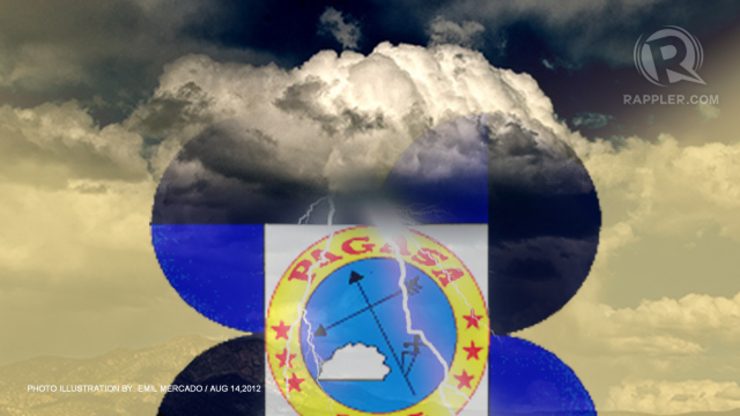SUMMARY
This is AI generated summarization, which may have errors. For context, always refer to the full article.

MANILA, Philippines – “Outdated, wrong, misleading.”
This was how Project NOAH Executive Director Mahar Lagmay’s described news reports about a Commission on Audit (COA) report alleging that state weather bureau PAGASA does not have the ability to properly warn the country against storms.
He gave his reaction to members of the media on Tuesday, December 2, a day after the story was first published on the Philippine Daily Inquirer.
Lagmay said he was able to get a copy of the COA report the article was based on.
He called the information outdated saying the COA report discusses findings made by the audit agency in December 2013 – a year ago.
“Many things have happened since then… It just so happens that everything they (COA) have written as suggestions is already being done by PAGASA and Project NOAH,” he said.
Storm surge warning
The Inquirer article focused on the storm surge warning system being developed by PAGASA and Project NOAH worth at least P80 million.
It quoted the COA report as saying the agency “does not have an adequate early warning system for storm surges to forewarn the public on the severe impact of a typhoon as powerful as Typhoon Yolanda.”
Lagmay countered that the advanced storm surge maps COA had recommended are near completion and may even be used to prepare for possible storm surges from Typhoon Hagupit.
He said maps for the 54 out of the 64 coastal provinces are ready, including maps for all coastal provinces in the Yolanda corridor.
At the time Yolanda struck, the advanced storm surge map project was only two months old. Thus, PAGASA could only produce a list of affected localities and the expected storm surge heights.
The advanced storm surge maps visualize where in the community storm surges of varying heights will reach, allowing LGUs and disaster preparation teams to identify danger zones and safe zones.
The article’s title, said Lagmay, does not give full justice to the COA report which in fact praised some PAGASA and Project NOAH initiatives.
The COA report said that in terms of forecasting the track and strength of Yolanda, “PAGASA is not wanting in these aspects and in fact did its best to inform the nation.”
“If we are ill-equipped, my question is, how were we able to predict two days in advance those hit by the storm surge during Yolanda?” asked Lagmay.
‘Demoralizing’
PAGASA Acting Deputy Director for Research and Development Flaviana Hilario called the article “demoralizing” to scientists and employees in PAGASA.
Lagmay said the article was “nakakasama ng damdamin (hurtful to our feelings),” especially because it began by recommending that readers no longer trust PAGASA forecasts and instead follow forecasts of foreign weather stations.
“But our forecasts are much more accurate, especially inside PAR, because we have the equipment and more localized information,” said Hilario.
Aside from hurting the credibility of PAGASA, it is also unfair to “employees of PAGASA who have small salaries yet work so hard,” said Lagmay in Filipino.
The ill-preparedness of some local government units and the casualties that ensued cannot all be blamed on PAGASA, something which the COA report also admitted, he said.
“Two things are important: warning or the ability of government to give advice, which I believe we fulfilled. But it must be matched with the right action and it’s not just the responsibility of PAGASA. Everyone should be helping out.” – Rappler.com
Add a comment
How does this make you feel?
There are no comments yet. Add your comment to start the conversation.